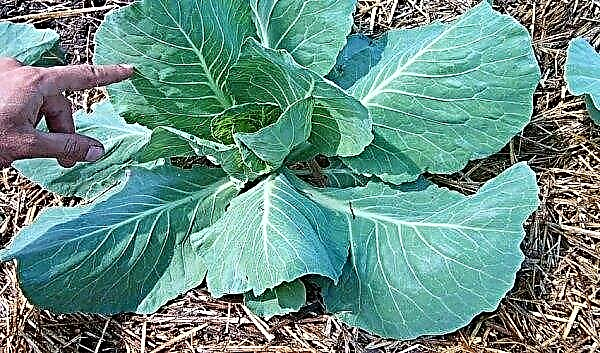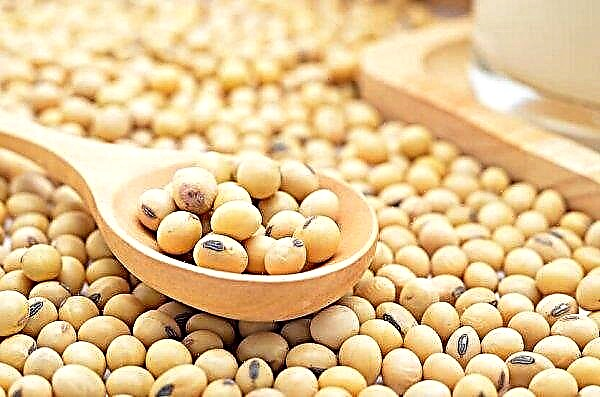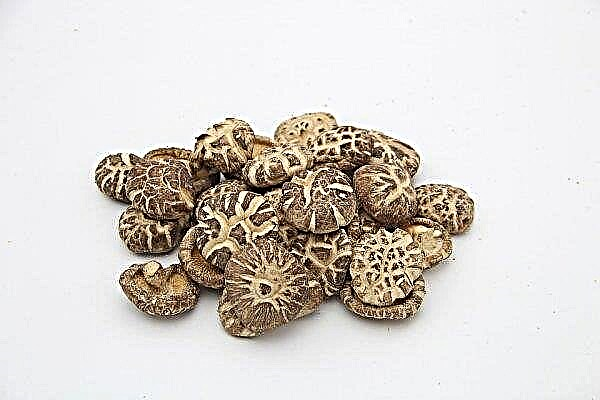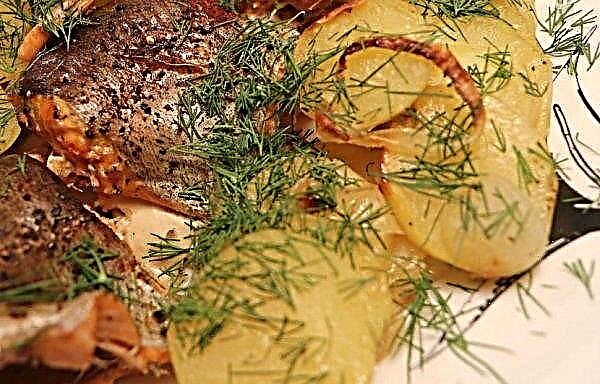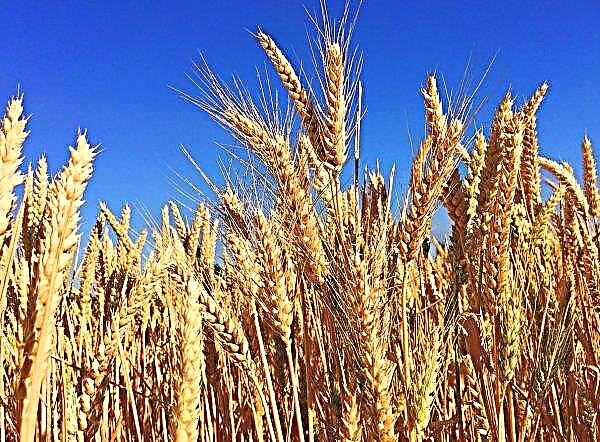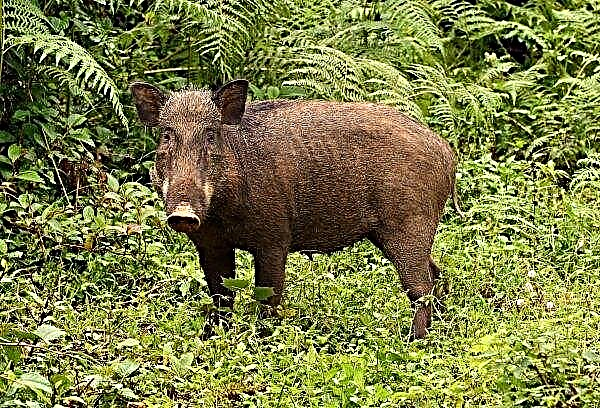Infection with bacterial diseases of a cucumber plantation can occur at any time. What to do if the plants are affected by bacteriosis of cucumbers, read on in the article.
Did you know? Cucumbers are able to lower blood temperature. Therefore, they are used to reduce puffiness in cosmetic face masks.
What contributes to the onset of the disease?
Infection with diseases of a bacterial nature occurs in different ways: through contact with animal carriers of bacteria, parts of infected plants, soil, water or tools that were used to work with diseased plants. The decaying remains of organic matter on the site is a constant and lasting source of the spread of bacteria.
Bacteriosis of cucumbers occurs due to increased humidity and high air temperature. Shaded beds, thickened crops also contribute to the spread of bacteria.
How does the disease develop?
Cucumber bacteriosis is also called angular spotting. It is caused by the bacterium Pseudomonas syringae pv. Lachrymans, affecting not only cucumbers, but also all melons. Symptoms of the disease begin to appear in the form of dark spots on the leaves. If you look closely, they may turn out to be slightly watery. Gradually, the spots grow, but stop the growth, encountering leaf veins. And this gives them an angular appearance, hence the second name of the disease.During rains, such spots can be covered with white coating.
It dries with a white crust, which leads to rupture of the sheet tissue. As a result, the leaves become covered with holes. Subsequently, they crumble, and the plant fades. The bacterium multiplies only in wet weather. If the soil on the cucumber plantation is dry, it stops its development. A few weeks of hot weather will perfectly cope with the causative agent of the disease.
Infected fruits have small, almost round spots.. They are superficial, but when the affected tissue dies, these spots turn white and the whole fetus begins to rot from soft rot. As a result, infected fruits fall en masse.
How to protect cucumbers from bacteriosis
The occurrence of the causative agent of the disease and its active development depend on the presence of a favorable environment for it. So, in greenhouses, the disease occurs only if there are drops of liquid on the leaves at an air temperature of +19 ... + 24 ° С. If you organize ventilation and create heat, the bacteria will die.
Therefore, in the fight against diseases, several protection methods are distinguished:Important! Culture medium for bacteria pseudomonas syringae — nitrates. By reducing the nitrogen feed, you will deprive them of a nutrient medium, which will lead to the death of the bacteria.
- cultivation of resistant varieties;
- compliance with agrotechnical requirements for crop care;
- chemical control;
- biological control.

Ways to combat the disease folk remedies
Prevention and control of morbidity are aimed at minimizing damage from bacterial infection. Copper-based preparations are used as the main means of processing cucumber plantations before infection. This is 1% Bordeaux liquid and 0.5% solution of copper sulfate.

Spraying is most effective when the air temperature is above + 23 ° C and the foliage is wet. On a hot day, it is not recommended to spray cucumbers so as not to damage the leaves. Copper ions create a protective film on the surface of plant tissue. When dew moisturizes leaves in the morning, ions are activated and destroy pathogens. But if bacteria have already infected cucumbers, then they use the treatment with Fitoflavin, Gamair, Kuproksatom or other drugs.From folk remedies, spraying cucumbers with a decoction of onion husks, which was previously insisted for 15 hours, is used.
Important! Carefully follow the instructions on the packaging when using fungicides. Keep unused substances in their original packaging out of the reach of children.
Preventive measures
The best way to deal with the disease is prevention. Since the spots disappear after a few weeks of dry weather, it is enough to remove all organic residues from the site in a timely manner, which can become a permanent habitat for bacteria.It is also necessary to water so that the leaves and vines of cucumber plants are not wetted. It is better to organize drip irrigation. In addition, do not process plants in wet weather and do not harvest. So you will help the bacteria pseudomonas syringae to spread to healthy cucumbers and other vegetables.
Get disease resistant varieties. Limit nitrogen fertilizer and do not grow the same vegetables in the same place for more than a few years. You can also apply the recommended bactericide when you notice the first symptoms of bacteriosis on the leaves.
Tips from experienced gardeners
As part of the fight against bacterial infections, experienced gardeners note various features that help them successfully resist disease and get good yields.
Key tips:Did you know? If you are tired after a busy day or are under stress, inhalation by placing chopped cucumber in boiling water. He will secrete volatile. Inhale them for 15 minutes to get a soothing and relaxing effect.
- Carefully choose a landing site. The causative agent of bacteriosis dies in the sun within an hour.
- Tie the vines to a vertical trellis. This provides better lighting and air circulation around the vines.
- Use water at room temperature when watering.
- If on the site, there are signs of disease in the previous season, then in this you need to plant cucumbers only following the rules of crop rotation. It is also necessary to acquire varieties resistant to the detected disease.

Bacterial diseases are quite dangerous for the crop. Therefore, you should carefully approach the choice of place and material for planting, as well as observe preventive measures.

